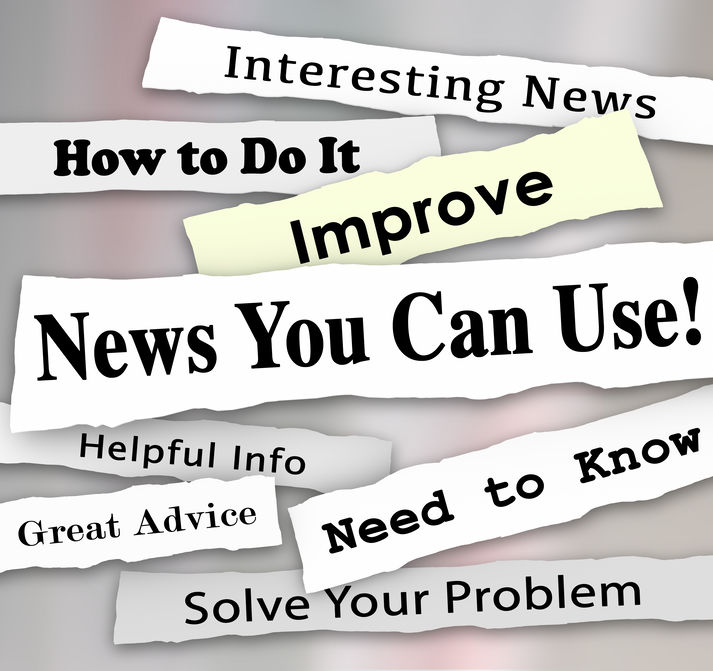
Headlines are important. The right title means the difference between your message getting read or unread. A powerful title informs, hooks readers, provokes curiosity, plays on emotion and provides value. Sounds easy, but there’s no one-size-fits-all headline that works best for all audiences. With that in mind, here are some proven-effective approaches for writing headlines you can test with your next email, blog post, newsletter, article, white paper or webinar.
Tips for Better Headlines
- How to __________
A “how to” title is a staple of B2B blogs and articles. One reason readers click into an article is to learn how to do something. The title should showcase exactly what your article aims to do. Examples: “How to Find and Repurpose Your Best Marketing Content” and “How to Create a Multicultural Marketing Strategy.”
- Problem + Solution
Similar to a “how to” title, a great header explains what the problem is and how to solve it. The headline captures the readers’ interest by calling attention to their known challenges. The solution that follows will feel even more important. Examples: “5 Blogging Mistakes and How to Fix Them” and “Using Authentic Conversations to Find the New Normal.”
- # Ways to/Reasons Why _________
If you spend any time reading blogs, you know that numbering is everywhere. And it’s for a good reason. When readers are looking for answers, they don’t want to spend a lot of time digging. Organize your content in a way that’s easy and quick to navigate. Examples: “5 Reasons Why You Need Podcasts in your Marketing Strategy”, “10 Ways to Fit Content Marketing Into Your Daily Routine” and “10 Reasons Why Direct Mail Isn’t Dead.”
- The Top/Best/Greatest _________
Your blogs and articles are published because you’re good at what you do and you have expertise to share. In your title, let readers know with confidence that they’ll learn from the best of the best. Examples: “Blogging at Its Best: 7 Guidelines” and “The Best Marketing Advice You Ever Received.”

- _______ You Need to Know
When your content is one of many potential B2B reads for your audiences, adding urgency can go a long way. Use phrases like “need to know” to express that there’s a burning reason behind the article that will provide crucial and timely value to your reader. Examples: “California Consumer Privacy Act (CCPA): What B2B Marketers Need to Know” or “50 Marketing Terms You Need to Know.”
- Are you __________?
Pose a question that makes your readers think. Call out your reader in the title of the article. It will give them pause to think whether they are or aren’t doing something right, and why it matters. Examples: “Work-Life Balance: Are You Working Too Much?” or “Are Your Emails Going Directly to the Spam Folder?”
- Tips/Best Practices for _________
Readers love a good tip. Sometimes they don’t need all the answers, they simply need to know how to do what they’re already doing a little bit better. Sharing your expertise means communicating that you know the best ways to do something. Provide those insider tips and suggestions to pull readers in. Examples: “Easy Tips for Keeping Visitors Engaged on your Website” or “6 Best Practices for a Successful Email Marketing Strategy.”
- Take These # Steps to _______
Marketing content lends itself to a step-by-step process. By spelling out the steps in logical order, you can showcase your skill and knowledge in an easy-to-follow, straightforward manner. Examples: “7 Steps to Creating Guest Blogs that Deliver Results” or “5 Steps to Targeted Editorial PR Success.”
Online Tools
If you’re still wondering if your title packs a punch, there are many useful online tools to help you analyze your headlines. Headline analyzers and algorithms help identify if your vocabulary is powerful and eye-catching. Some tools we recommend include:
- CoSchedule’s Headline Analyzer
- Advanced Marketing Institute’s Emotional Marketing Value Headline Analyzer
- Sharethough’s Headline Engagement Assessment Tool
- BuzzSumo’s Headline Generator
It’s All About Value

As with most marketing campaigns, the sooner you can convey your value proposition, the better. Powerful headlines put value front and center and propel audiences to read on. Maximize your opportunities for engagement and a positive response with not only headlines that sell, but content that reinforces the headline and provides real value to readers.
